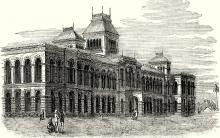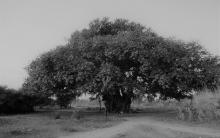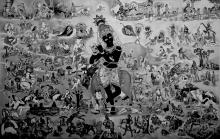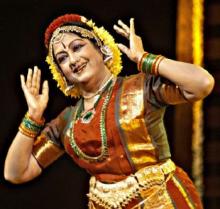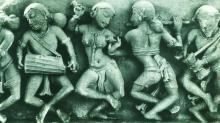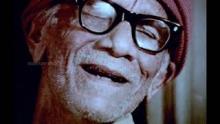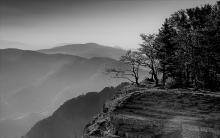மேலும் தற்போதுள்ள நமது பண்டிதர்கள் புத்த மற்றும் ஜைன மத தத்துவங்களையும் கற்க முன்வர வேண்டும் என்று நான் எண்ணுகிறேன். வேதத்தை அடிப்படையாக கொள்ளாத இதுபோன்ற மதங்களை நான் கற்கச் சொல்வது புதுமைக்காக அல்ல. ஒரு காலத்தில் புறக்கோட்பாடுகளாக கருதப்பட்ட சாங்கியத்தையும் வைசேஷிகத்தையும் கூட நமது பண்டைய புலவர்கள் கற்றுத்தேர்ந்தனர். சங்கரர் முன்னதை போலி-பாரம்பரியக் கொள்கையெனவும், பின்னதை அறை-சூனியவாதம் என்றும் கருதிவந்தார்.[1] அப்படி இருந்தும்கூட, இவற்றை உன்னிப்பாக பயின்றனர்.
Author:hari
ವೇಂಕಟನಾಥ
ವೇದಾಂತದೇಶಿಕರೆಂಬ ಗೌರವಾಭಿಧಾನವನ್ನು ಗಳಿಸಿದ್ದ ವೇಂಕಟನಾಥನು “ಕವಿತಾರ್ಕಿಕಕೇಸರಿ” ಎಂದು ಪ್ರಸಿದ್ಧ. ಈತನ ಕಾವ್ಯಗಳ ಪೈಕಿ “ಸಂಕಲ್ಪಸೂರ್ಯೋದಯ”ವೆಂಬ ನಾಟಕವು ನಮ್ಮ ಉದ್ದೇಶವನ್ನು ಕೆಲಮಟ್ಟಿಗೆ ಈಡೇರಿಸುತ್ತದೆ. ಈ ಕೃತಿ ಹನ್ನೊಂದನೆಯ ಶತಾಬ್ದದಲ್ಲಿದ್ದ ಕೃಷ್ಣಮಿಶ್ರಯತಿಯ “ಪ್ರಬೋಧಚಂದ್ರೋದಯ”ವನ್ನು ಆದ್ಯಂತ ಅನುಕರಿಸಿದೆ. ಈ ಅನುಕರಣೆ ಇತಿವೃತ್ತ ಮತ್ತು ಪಾತ್ರಗಳನ್ನೆಲ್ಲ ವ್ಯಾಪಿಸಿಕೊಂಡಿದೆ. ಇಂತಿದ್ದರೂ ಮೂಲಕ್ಕೆ ತನ್ನ ಆನೃಣ್ಯವನ್ನು ನಾಮಮಾತ್ರವಾಗಿಯೂ ಹೇಳದ ಮತಾಗ್ರಹ ವೇಂಕಟನಾಥನದು. ಆದರೆ ಪ್ರಬೋಧಚಂದ್ರೋದಯದಲ್ಲಿ ಪರಾಮೃಷವಾಗದ ಶಾಂತರಸಮೀಮಾಂಸೆಯ ಕೆಲವೊಂದು ಅಂಶಗಳು ಇದರ ಪ್ರಸ್ತಾವನೆಯಲ್ಲಿ ಬಂದಿರುವುದು ಮುದಾವಹ.
ನಾಟ್ಯಶಾಸ್ತ್ರೀಯ ಶುಷ್ಕಾಕ್ಷರಗಳು - ಆಂಗಿಕದಲ್ಲಿ ತಾಳವ್ಯಾಪಾರ
ಡಾ।। ಪದ್ಮಾಸುಬ್ರಹ್ಮಣ್ಯಂ ಅವರು ಈಚಿನ ಶತಮಾನಗಳಲ್ಲಿ ಲುಪ್ತಪ್ರಾಯವಾಗಿದ್ದಂತಹ ನಾಟ್ಯಶಾಸ್ತ್ರದಲ್ಲಿ ಉಲ್ಲೇಖಗೊಂಡಿರುವ ಶುಷ್ಕಾಕ್ಷರಗಳನ್ನು ನೃತ್ತ-ನೃತ್ಯ-ನಾಟ್ಯ-ಪ್ರಯೋಗಗಳಲ್ಲಿಯೂ (ಅಂಗಹಾರಾದಿಗಳ ಪ್ರಯೋಗ), ಪೂರ್ವರಂಗದ ಭಾಗವಾಗಿಯೂ ವಿನಿಯೋಗಿಸಿರುವರು. ಇವರಿಂದ ಪ್ರೇರಿತರಾದ ಅವರ ಶಿಷ್ಯ-ಪ್ರಶಿಷ್ಯವರ್ಗವೂ ಇಂತಹ ಶುಷ್ಕಾಕ್ಷರಗಳನ್ನು ಔಚಿತ್ಯಪೂರ್ಣವಾಗಿಯೂ ರಸಪೋಷಕವಾಗಿಯೂ ವಿನಿಯೋಗಿಸಿರುವುದನ್ನು ಕಾಣಬಹುದು. [1]ಇವೇ ಶುಷ್ಕಾಕ್ಷರಗಳು ದೇಶೀನೃತ್ಯ-ನಾಟ್ಯಪದ್ಧತಿಗಳಲ್ಲಿ 'ಸೊಲ್ಲು-ಕಟ್ಟು', 'ತತ್ಕಾರ್' ಇತ್ಯಾದಿಯಾಗಿ ಪ್ರತಿಬಿಂಬಿತವಾಗಿವೆ.
ಭಾರತದ ಅಭಿಜಾತ-ನೃತ್ಯ ಮತ್ತು ನಾಟ್ಯ ಕಲೆಗಳಿಗೆ ಗೀತ-ವಾದ್ಯಗಳು ಅತ್ಯಮೂಲ್ಯವೂ ಅತ್ಯಾವಶ್ಯಕವೂ ಆದ ಆಲಂಬನಗಳಾಗಿವೆ[1]. ಕರ್ಣರಂಜಕವಾದ ಗಾನವಾದನಗಳೊಂದಿಗೆ ಮೂಡಿಬರುವಂತಹ ನೃತ್ಯ-ನಾಟ್ಯಗಳು ಮಾತ್ರವೇ ಮನೋರಂಜಕವಾದವು. ಗೀತವಾದ್ಯವಿಹೀನವಾದ ಕೇವಲದೈಹಿಕಚಲನೆಯು ಹಾಸ್ಯಾಸ್ಪದವಾದೀತು, ಅಥವಾ ಕಿವುಡರಿಗೆ ಒಂದಾನೊಂದು ಸಂದೇಶವನ್ನು ನೀಡುವ ಮಾಧ್ಯಮವಾದೀತು. ಹಾಗಾಗಿ ಚಲನಶೀಲವಾದ ದೃಶ್ಯಮಾಧ್ಯಮದ ಕಲೆಗೆ ಅಷ್ಟೇ ಚಲನಶೀಲವೂ ಸುಂದರವೂ ಆದ ಸಂಗೀತವು ಅನಿವಾರ್ಯವಾದುದು. ಹೀಗಿದ್ದಲ್ಲಿಯೂ ಸ್ಥಿರದೃಶ್ಯಕಲೆಗಳಾದ ಚಿತ್ರ-ಶಿಲ್ಪಗಳು ಸ್ವತಂತ್ರವಾಗಿ, ವಾಚಿಕನಿರಪೇಕ್ಷವಾಗಿ ನಿಲ್ಲಬಲ್ಲವು ಎಂಬುದು ಗಮನಾರ್ಹ.
The following day, when they all assembled in the court, Marubhūti hung his head down with shame. Looking at him, Ratnaprabhā said, “Ārya-putra! You are truly fortunate to have your childhood friends as ministers. They too are fortunate to have their childhood friend as the king of the land. This is indeed a fortuitous result of the (good) karmas from former births!” When he heard these words, Tapantaka remarked, “It is true that he has become our king owing to karmas of a previous birth!” and narrated the following tale —
Poetry in Hosagannaḍa
Masti, who was inspired by the Hoysaḷa sculptures, wrote his early poems in Hosagannaḍa. Upon seeing this, T S Venkannayya remarked, “It has been more than three hundred years since something this original has been composed in Kannada.”
Every jīva’s characteristics and circumstances differ from one another. Therefore every one’s dharma is different. Thus everyone has his or her own svadharma.
ಹಸ್ತಿಮಲ್ಲ
ಕನ್ನಡ-ಸಂಸ್ಕೃತಗಳೆರಡರಲ್ಲಿಯೂ ವಿದ್ವತ್ಕವಿಯಾಗಿದ್ದ ಹಸ್ತಿಮಲ್ಲನ ಕಾಲ ಇನ್ನೂ ಅನಿಶ್ಚಿತ. ಈತನ “ಅಂಜನಾಪವನಂಜಯ” ಎಂಬ ನಾಟಕದ ಪ್ರಸ್ತಾವನೆಯಲ್ಲಿ ಬರುವ ಕೆಲವೊಂದು ಮಾತುಗಳು ವಿವೇಚನೀಯ:
ಸಮೀಚೀನಾ ವಾಚಃ ಸರಲಸರಲಾ ಕಾಪಿ ರಚನಾ
ಪರಾ ವಾಚೋಯುಕ್ತಿಃ ಕವಿಪರಿಷದಾರಾಧನಪರಾ |
ಅನಾಲೀಢೋ ಗಾಢಃ ಪರಮನತಿಗೂಢೋऽಪಿ ಚ ರಸಃ

